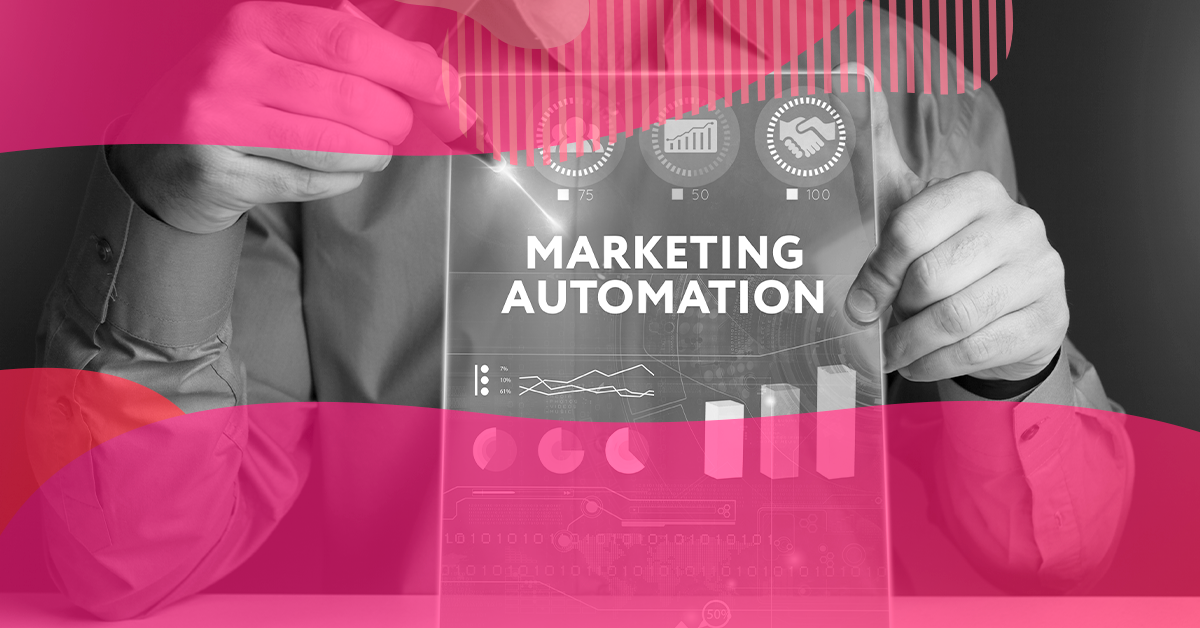
Marketing automation processes can improve internal communication and favor contact with leads (people interested in your brand), help all educational institution processes, from attracting new students to enrollment, and even retention.
That's why we're going to show you how you can, using automation features, map responses to student conversations on your website.
What you will see:
- Why is this Marketing Automation important?
- How does automation software map responses from your leads?
- How does Drift Chat map lead responses?
- How does IBM's Watson fit into this equation?
- When does automation start to integrate your Marketing processes?
Check it out now!
Why is this Marketing Automation important?
Automation software allows you to prevent lead evasion through the use of routines created based on the knowledge you and your team have, as well as the features that each tool presents.
An excellent example of this is the use of chats for communication. Once you have this tool on your website, students no longer need to fill out forms or send emails to get their answers. Everything can be resolved on the main page. This dynamic helps to prevent the lead from evading and going to another educational institution that may have more complete information or simpler contact.
If we think of higher levels of automation, it is possible to include a robot with Artificial Intelligence (AI) or an automatic response routine so that your chat can interact with students even without human intervention.
But why is this so interesting? Well, the full potential of chat is related to its routine and automations. You can configure it to receive leads on the site with a welcome message, ask questions, answer questions and even direct people to the agent who can best serve them.
When your educational institution relies on a robot to take the first step in customer service, for example, the average time leads have to wait until they receive a response is significantly reduced, which prevents conversation avoidance.
How does automation software map responses from your leads?
In addition to helping with lead retention, automation software also allows you to map the responses that are given in the interaction. After all, just as important as having close contact is collecting information to help move that lead through the sales funnel, right?
That's where the main functions of these technologies we're talking about come in. So we are going to explain each of them now and how they work.
How does Drift Chat map lead responses?
Drift is one of the leading companies in the field of chatbots worldwide. Thanks to her expertise, she has developed several high-value products for Marketing automation processes, especially her chats and the integrations they can make.
When we think about response mapping, Drift Chat is a very interesting alternative. The tool can be configured to ask the qualifying questions that you use to measure how close a lead is to conversion.
Then, just have an integration with your Customer Relationship Management (CRM) and the robot creates a record for the person it is talking to.
Another interesting feature of Drift chat is that the robot can answer your leads' questions. For this, it needs to be integrated into your knowledge center. And, as with other communications, it stores the entire conversation, which can be consulted later by salespeople or even by your Marketing team.
In other words, once the integrations between its tools and Drift chat are made, the robot starts to create records and map the response of each lead that comes in contact, all automatically and without the need for human intervention (the unless the lead asks for it to happen or you determine some scenarios that an agent will intervene).
Imagine, for example, that you use Hubspot's CRM. As soon as a lead starts the chat conversation, the robot can ask for the person's name, contact details and interests. All this information is stored in your CRM, and then you can use it to send messages or even perform statistical analysis.
The interesting thing is that the questions asked by the robot are defined by its strategy. Then he can get the information his team usually uses to qualify the lead.
See too:
- The education purchase funnel has changed: learn how to benefit from the new opportunities;
- CRO – Conversion Rate Optimization: what it is and how it works;
- Students Retention and Acquisition: who to do it? Learn with the best!
How does IBM's Watson fit into this equation?
Complementary to Drift Chat, it is still possible to count on another automation process: Watson, the Artificial Intelligence (AI) developed by IBM. This tool has the famous Natural Language Processing (NLP).
This feature allows him to understand human languages and learn constantly. Yes, in this case we are talking about a machine that can imitate some patterns of human learning based on what it was programmed to do.
This means that, by “feeding” Watson with a series of data and routines, it can improve its repertoire and converse as if it were a human. And with each contact he has with his team or with leads, this process is improved and it evolves continuously.
In this case, we can understand Watson as an automation tool that helps to optimize communication processes without the need for your team to intervene.
When does automation start to integrate your Marketing processes?
Even understanding how response mapping works and the role of each tool in lead service, it is still necessary to see how these automation software will integrate your internal Marketing processes, correct?
Drift chat, for example, follows a series of protocols established by you and your team, and ends up playing an important role in Marketing automation. In addition to mapping the responses, the result of these new records generate other automation flows.
It allows, for example, that after qualifying the lead, your salespeople's agenda is available for the person to schedule a time to talk. Interesting, isn't it? And without the need for human intervention.
Another interesting point is that the conversation route can be drawn based on parameters. Is one salesperson better able to sell Psychology courses and another one having better results with Business Administration students? Have the Drift chatbot target these people based on the leads' interests — or teach Watson how to do this and it will learn.
With the help of your CRM (Hubspot, for example), a good setup and good integrations, Drift Chatbot and Watson can be integrated into the automation flow, allowing for more efficient communication strategies.
Imagine, for example, how difficult it is for a salesperson to win a registration when using cold calls (calls to people who have not yet had contact with your brand) compared to contacting a lead who has scheduled a call and has already shown interest in your services.
This not only saves time, but also money. The acquisition cost per student drops and your team works with alignment, avoiding wasted opportunities and ensuring that those who have the potential to become one of your students will receive due attention.
As you can see, Drift chat and Watson offer a world of possibilities for your educational institution. Therefore, the use of forms ends up being in the background, since it is not so interesting to work with Marketing automation with such precision.
But, before deciding to adopt this tool, we have one more reading suggestion. Check out our text that shows you how to qualify leads on your website without forms and the content that explains everything you need to know to do formless marketing automation.
































